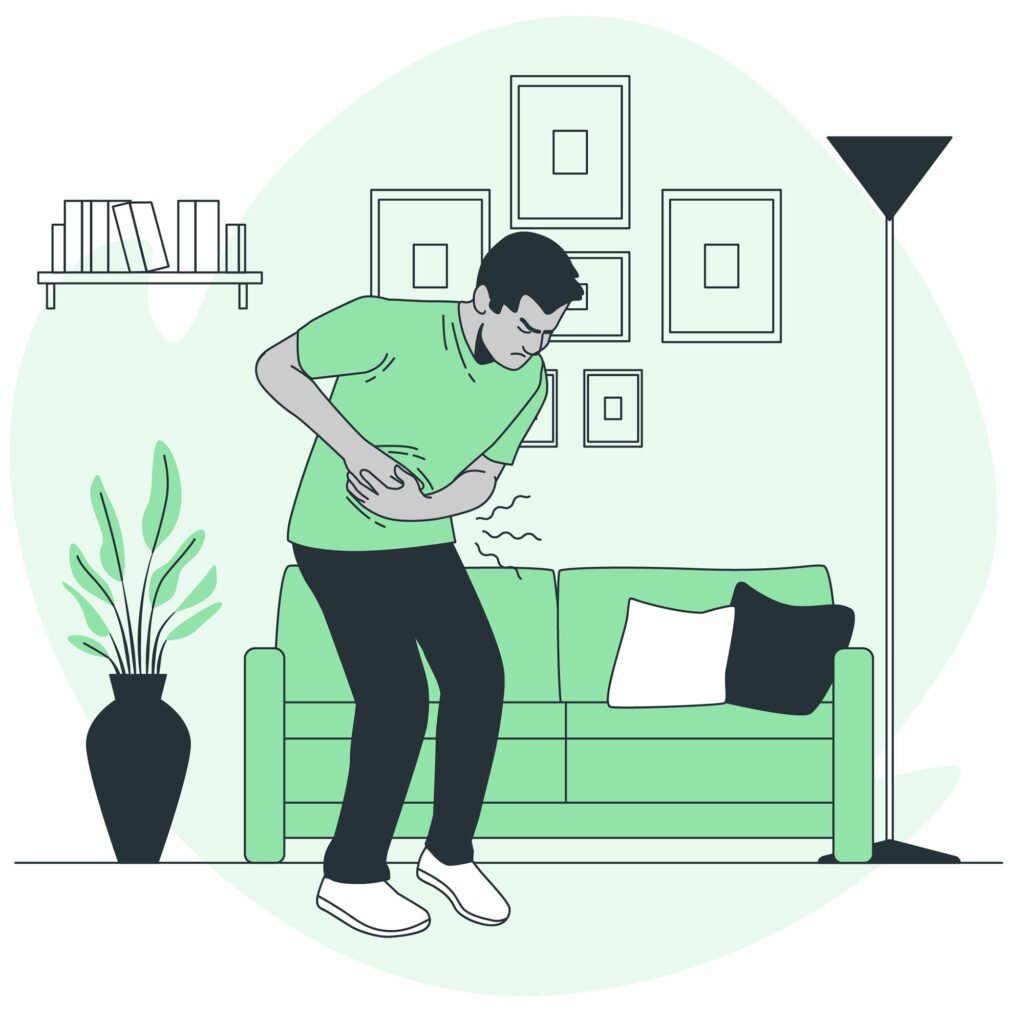Kidney stones, also known as renal calculi, are solid mineral and salt deposits that form in the kidneys. They can vary in size, ranging from tiny particles to large stones that can block the urinary tract. Kidney stones can be excruciatingly painful and may cause various signs and symptoms of kidney stones. Recognizing these symptoms is crucial for timely diagnosis and treatment. In this comprehensive guide, we will delve into eight common signs and symptoms of kidney stones, shedding light on their causes, diagnosis, and potential treatments.

- Severe Abdominal and Flank Pain: One of the most characteristic symptoms of having kidney stones is severe pain in the abdominal and flank regions. The pain usually originates in the back and then radiates to the lower abdomen and groin area. This type of pain is often described as intense and colicky, meaning it comes and goes in waves. The severity of pain can be excruciating, causing individuals to writhe in discomfort. The pain occurs when the kidney stone symptoms for males obstruct the flow of urine, leading to distension of the renal pelvis and ureter. The ureter’s muscular contractions against the obstruction cause waves of pain.
- Hematuria (Blood in Urine): The blood can be visible to the naked eye, giving the urine a pink, red, or brownish color. In some cases, blood may not be visible to the naked eye, but it can be detected through a urinalysis. The signs of kidney stones through the urinary tract can cause irritation and damage to the delicate tissues, leading to blood leakage into the urine. The presence of blood in the urine, known as hematuria, is another common early signs of kidney stones.
- Frequent Urination and Urgency: Kidney stones can irritate the lining of the urinary tract, leading to increased frequency of urination. Individuals may feel an intense urge to urinate even when the bladder is not full. However, the amount of urine passed during each episode may be small due to obstruction caused by the stone. This symptom is especially common when the stone is located near the bladder or when there are multiple stones.
- Nausea and Vomiting: The severe pain associated with kidney stone symptoms for males can trigger nausea and vomiting in some individuals. The exact mechanism behind this symptom is not entirely understood, but it may be related to the body’s response to intense pain or due to the release of certain chemicals in response to the obstruction.
- Fever and Chills: In some cases, kidney stones can lead to an infection in the urinary tract, known as a urinary tract infection (UTI). This can result from stagnant urine caused by the stone’s obstruction, which creates an environment conducive to bacterial growth. As a result, individuals may experience fever, chills, and general malaise. If there are signs of infection, medical attention is necessary to prevent further complications.
- Cloudy or Foul-Smelling Urine: Kidney stones can cause changes in urine appearance and smell. The urine may become cloudy due to the presence of pus or bacteria from an infection. Additionally, some individuals may notice that their urine has a strong and foul odor, which is another indication of infection.
- Painful Urination: When a kidney stone irritates the urinary tract, it can cause pain and discomfort during urination. This symptom is often described as a burning or stinging sensation and is similar to the sensation experienced during a urinary tract infection. The pain may be more pronounced at the beginning or end of urination.
- Painful Groin or Testicular Area: In men, the pain from kidney stones can radiate to the groin and testicular region. This is because the ureters, the tubes connecting the kidneys to the bladder, pass close to the male reproductive organs. The referred pain to these areas can be confusing, and men experiencing such pain should be evaluated for kidney stones.
While the above signs and symptoms of kidney stones are common indicators, it’s important to note that some individuals may have asymptomatic kidney stones, meaning they do not experience any noticeable symptoms. These stones are often discovered incidentally during imaging tests for unrelated medical conditions.
If you or someone you know experiences any of the signs and symptoms of kidney stones mentioned above, it is essential to seek medical attention promptly. A healthcare provider will perform a physical examination and may order diagnostic tests such as imaging studies (ultrasound, X-ray, or CT scan) and urinalysis to confirm the presence of kidney stones and determine their size and location.
Treatment for kidney stones depends on various factors, including the stone’s size, location, and the severity of Signs and Symptoms of Kidney Stones. Small stones may pass spontaneously through the urinary tract with ample fluid intake and pain management. Larger stones or stones causing complications may require medical intervention, such as extracorporeal shock wave lithotripsy (ESWL), ureteroscopy, or percutaneous nephrolithotomy (PCNL). In some cases, surgical removal of the stone may be necessary.
Signs and Symptoms of Kidney Stones involve lifestyle modifications such as staying hydrated by drinking plenty of water, reducing salt intake, and adopting a balanced diet low in oxalate-rich foods (e.g., spinach, nuts, and tea). Your healthcare provider may also recommend medications or supplements to prevent stone formation in individuals with a history of recurrent kidney stones.
In conclusion, kidney stones are a common medical condition that can cause distressing signs and symptoms of kidney stones. Early recognition of these symptoms of having kidney stones can lead to timely diagnosis and appropriate treatment, minimizing the risk of complications and improving the overall outcome for individuals affected by kidney stones. If you suspect you have kidney stones or experience any of the symptoms discussed in this guide, do not hesitate to seek medical attention to receive proper evaluation and management.
